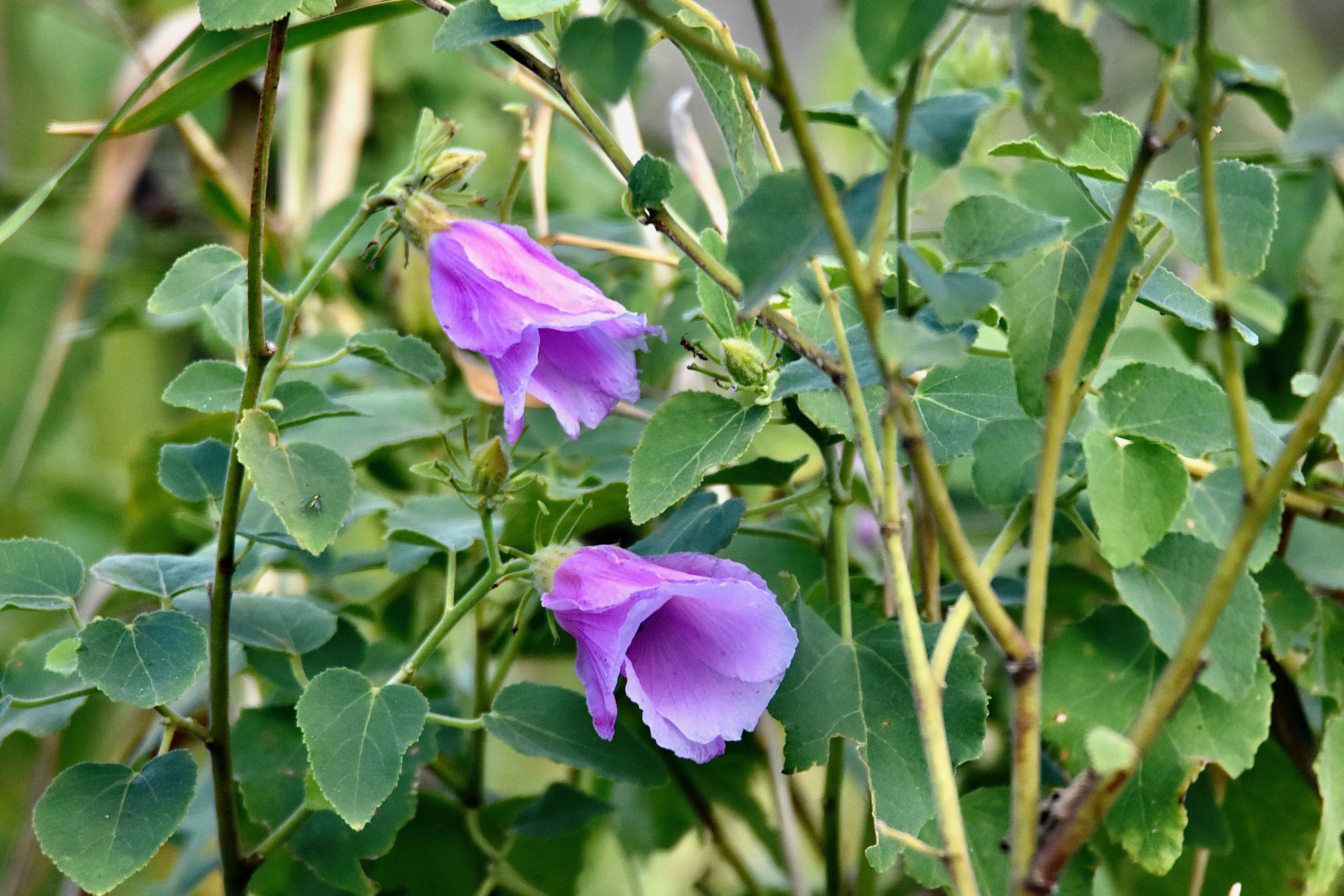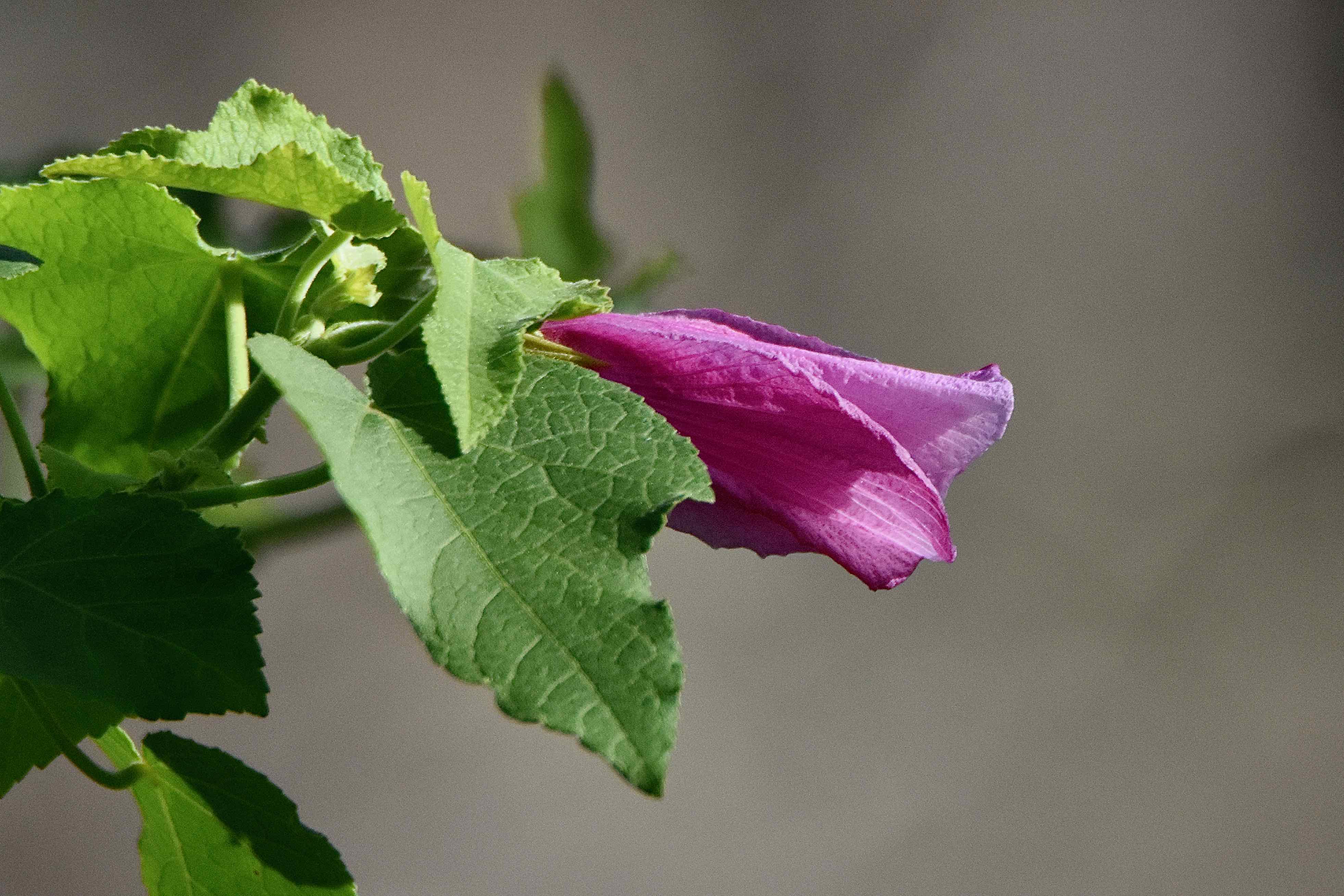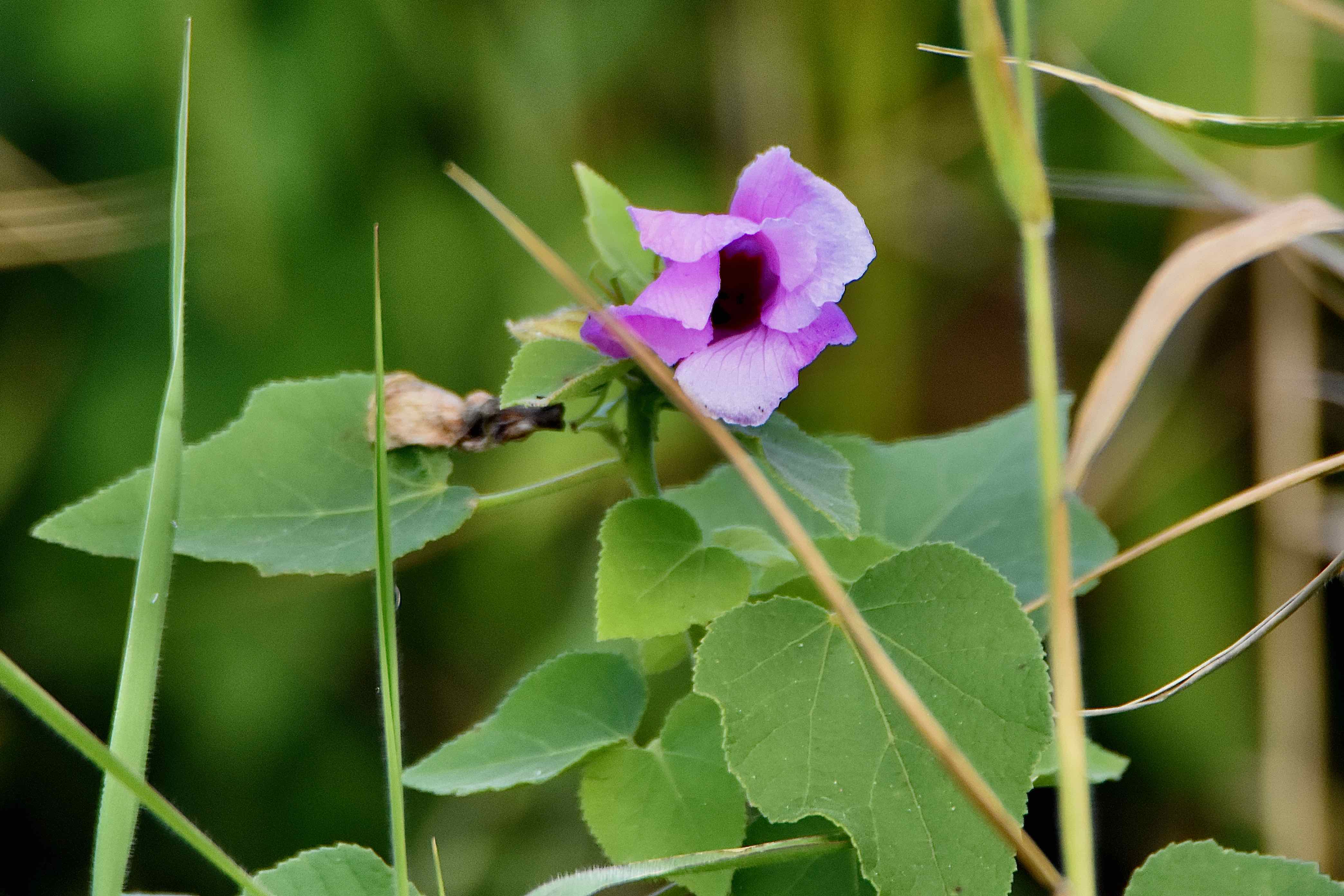
Lindenleaf rosemallow, photographed at Dupuis Wildlife Management Area, Canal Point, Martin County, in December 2018.
Wait all day for the flower to fully open and reveal all its glory, but this is about as good as it gets with lindenleaf rosemallow, aka linden leaf rose mallow, aka linden-leaf rose-mallow aka Hibiscus furcellatus.
The blooms are large, in beautiful shades of pink and violet, with a deeply hued throat. But they remain somewhat closed and slightly droopy compared with other native hibiscus. We learned that the hard way when we first saw lindenleaf, returning earlier the next day to the place where we first saw it, and then the next and the next, futily hoping to see it fully open. And failing, of course.
It's not called sleepy hibiscus for nothing.
In any case, lindleaf rosemallow is Florida native found mostly along the Atlantic Coast between Broward and Brevard counties, with populations in Highland and Pinellas counties as well. It's also found throughout the Caribbean, parts of Mexico, Central America and South America to Argentina. It's also a native of Hawaii.
It's a rare plant in Florida; the Institute for Regional Conservation considers it to be imperiled in South Florida, but can be abundant in places where it's found. We've seen it more frequently in northern Palm Beach County into Martin than in points farther south, with Jupiter/Juno Beach being the unofficial dividing line. IRC says it's been reported as far south as Secret Woods Nature Center along the New River in Broward, and at Delray Oaks Natural Area in Delray Beach, but both populations are likely gone. The first place we saw it was at Pondhawk Natural Area in Boca Raton, but almost certainly it was planted there as the natural area was developed.
Lindenleaf likes wet soils, but unlike some other native hibiscus it doesn't need to be inundated to survive. It can found in places that are seasonally covered with water and it can tolerate some drought as well. Habitat includes pinelands and the edges of wetlands.
Lindenleaf rosemallow is a fairly large shrub, growing to about six feet, and can be wider than it is tall. The leaves are heart-shaped, with shallow lobes; stems are fairly bristly. Flowers, which can be six inches long or more, appear all year. In Hawaii, the plant can exceed 10 feet in height, with a spread of eight feet or more.
The long, narrow throat makes it difficult for butterflies to visit lindenleaf rosemallow, but it's no problem for smaller pollinators, such as bees, and those properly equipped, like hummingbirds.
Hibiscus, which includes hundreds of species, generally are edible and have medicinal uses, some of which have been verified scientifically. They're widely used for teas; a 2008 U.S. Department of Agriculture study found them useful in lowering blood pressure in pre- and mildly hypertensive adults. Seeds contain oils that are edible.
In tradiational Hawaiian medicine, mother and infants would chew the base of lindenleaf buds as a laxative. Children would eat the seeds as a general tonic of sorts. Lindenleaf is known in the Islands as 'Akiohala.
In Hawaii, lindenleaf is commonly used in landscaping, but not so much here in Florida. Few, if any, commercial nurseries in the state carry the plant, but it can be grown from seed.
Lindenleaf rosemallow is a member of Malvaceae, the mallow family. Other common names include Hawaiian pink hibiscus and rosemallow.
Photo Gallery — Click on photo for larger image
Links for Lindenleaf Rosemallow



